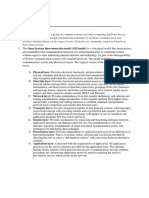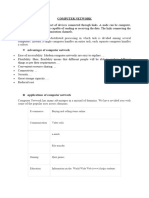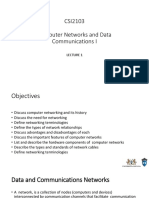0% found this document useful (0 votes)
31 views7 pagesIT Portion Checklist
The document discusses many topics related to information technology including digital currencies, data mining, social networking, the impact of IT on society, new and emerging technologies, communications technology, networking components, cloud computing, data transmission, routing, protocols, network management, transmission methods, wireless technology, and mobile communications. It provides details on the types, uses, advantages, and disadvantages of each topic. It also discusses the impact and risks of digital currencies and the effects of technologies on individuals, businesses, organizations, and governments.
Uploaded by
Fatima MajidCopyright
© © All Rights Reserved
We take content rights seriously. If you suspect this is your content, claim it here.
Available Formats
Download as DOCX, PDF, TXT or read online on Scribd
0% found this document useful (0 votes)
31 views7 pagesIT Portion Checklist
The document discusses many topics related to information technology including digital currencies, data mining, social networking, the impact of IT on society, new and emerging technologies, communications technology, networking components, cloud computing, data transmission, routing, protocols, network management, transmission methods, wireless technology, and mobile communications. It provides details on the types, uses, advantages, and disadvantages of each topic. It also discusses the impact and risks of digital currencies and the effects of technologies on individuals, businesses, organizations, and governments.
Uploaded by
Fatima MajidCopyright
© © All Rights Reserved
We take content rights seriously. If you suspect this is your content, claim it here.
Available Formats
Download as DOCX, PDF, TXT or read online on Scribd
/ 7























































